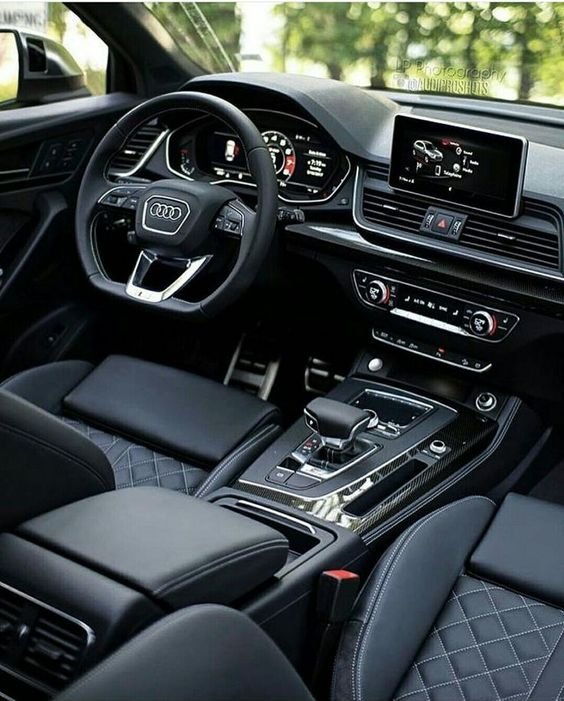Car insurance is a crucial aspect of owning a vehicle. It provides financial protection in case of accidents, theft, or other unforeseen events involving your car. Understanding how car insurance works, the types of coverage available, and how to choose the right policy can help you make informed decisions and ensure you’re adequately protected. This ultimate guide will walk you through everything you need to know about car insurance.
1. Understand Your Car’s Value
Car insurance is a contract between you and an insurance company. In exchange for paying a premium, the insurance company agrees to cover specific financial losses related to your vehicle. These losses could include damage to your car, damage you cause to others’ property, medical expenses for injuries, and more, depending on the coverage you choose.
2. Types of Car Insurance Coverage
There are several types of car insurance coverage, each designed to protect against different risks. Here’s a breakdown of the most common types:
– Liability Coverage: This is the most basic type of car insurance, required by law in most states. It covers the cost of damage or injuries you cause to others in an accident. There are two types of liability coverage:
– Bodily Injury Liability: Covers medical expenses, lost wages, and legal fees if you’re found responsible for injuring someone in an accident.
– Property Damage Liability: Covers the cost of repairing or replacing another person’s property (e.g., their car) if you’re at fault in an accident.
– Collision Coverage: This covers the cost of repairing or replacing your vehicle if it’s damaged in a collision, regardless of who is at fault.
– Comprehensive Coverage: This protects your car against damage not caused by a collision, such as theft, vandalism, natural disasters, or hitting an animal.
– Personal Injury Protection (PIP): Also known as no-fault insurance, PIP covers medical expenses and lost wages for you and your passengers, regardless of who is at fault in an accident.
– Uninsured/Underinsured Motorist Coverage: This coverage protects you if you’re involved in an accident with a driver who has no insurance or insufficient insurance to cover your damages.
– Medical Payments Coverage (MedPay): This covers medical expenses for you and your passengers, regardless of fault. It’s similar to PIP but typically offers less extensive coverage.
– Gap Insurance: If you’re leasing or financing your car, gap insurance covers the difference between what you owe on the vehicle and its actual cash value if it’s totaled or stolen.
3. How Car Insurance Premiums are Determined
Several factors influence the cost of your car insurance premium, including:
– Driving Record: A clean driving record with no accidents or violations typically results in lower premiums, while a history of accidents or tickets can increase your costs.
– Age and Gender: Younger drivers, especially teenagers, often pay higher premiums due to their lack of experience. Statistically, men tend to pay more than women, though this can vary based on other factors.
– Location: Where you live plays a significant role in determining your premium. Urban areas with higher traffic and crime rates generally lead to higher insurance costs than rural areas.
– Type of Vehicle: The make, model, and age of your car affect your insurance rate. Expensive, high-performance, or newer vehicles often cost more to insure due to their higher repair or replacement costs.
– Credit Score: In many states, insurers use your credit score as a factor in determining your premium. A higher credit score can result in lower insurance costs.
– Coverage and Deductibles: The more coverage you choose and the lower your deductible (the amount you pay out of pocket before insurance kicks in), the higher your premium will be.
4. Choosing the Right Car Insurance Policy
Selecting the right car insurance policy involves balancing coverage needs with your budget. Here are some steps to help you choose:
– Assess Your Needs: Consider factors like the value of your car, your driving habits, and your financial situation. If you have a newer or expensive car, comprehensive and collision coverage may be worth the cost. If you have an older car with a lower value, you might opt for just liability coverage.
– Compare Quotes: Get quotes from multiple insurance companies to compare prices and coverage options. Make sure you’re comparing similar policies to get an accurate assessment.
– Check Discounts: Many insurers offer discounts that can help lower your premium. These might include safe driver discounts, multi-policy discounts (if you bundle car insurance with home or renters insurance), and discounts for safety features like anti-theft devices.
– Review the Insurer’s Reputation: Consider the insurance company’s financial stability, customer service record, and claims process. Reading reviews and checking ratings from organizations like J.D. Power or A.M. Best can provide insight into the insurer’s reliability.
– Reevaluate Annually: Your insurance needs may change over time, so it’s a good idea to review your policy each year. You might find opportunities to save money by adjusting your coverage or switching to a different insurer.
5. Understanding the Claims Process
If you’re involved in an accident or your car is damaged, filing a claim is how you access your insurance benefits. Here’s a general overview of the claims process:
– Report the Incident: Notify your insurance company as soon as possible after an accident or damage occurs. Provide details about the incident, including photos, if available.
– Submit a Claim: Your insurer will guide you through the claims process, which typically involves filling out forms and providing documentation of the damage.
– Investigation: The insurance company will investigate the claim, which may include reviewing police reports, contacting witnesses, and assessing the damage to your vehicle.
– Settlement: Once the investigation is complete, the insurer will offer a settlement amount to cover the repairs, medical bills, or other damages. If you agree to the settlement, the insurer will issue payment.
– Repair or Replacement: Depending on the nature of the claim, you can use the settlement money to repair your vehicle or, if it’s totaled, purchase a new one.
6. Common Car Insurance Myths
There are several misconceptions about car insurance that can lead to confusion. Here are a few common myths debunked:
– Myth: Red cars cost more to insure: The color of your car has no impact on your insurance premium. Insurers don’t consider color when determining rates.
– Myth: Your insurance covers any damage to your car: Not all policies cover every type of damage. For example, liability insurance only covers damage you cause to others, not your own car. Comprehensive and collision coverage are needed to protect your vehicle.
– Myth: Insurance follows the driver, not the car: In most cases, car insurance follows the car, not the driver. This means if someone else drives your car and gets into an accident, your insurance policy would likely cover the damages.
– Myth: Older drivers always pay more: While it’s true that younger drivers often face higher premiums, older drivers with good driving records can enjoy lower rates. However, very elderly drivers may see rates increase due to age-related factors.
7. How to Save on Car Insurance
There are several strategies you can use to reduce your car insurance costs:
– Increase Your Deductible: A higher deductible can lower your premium, but make sure you can afford to pay the deductible if you need to file a claim.
– Bundle Policies: If you have other types of insurance (like home or renters), consider bundling them with your car insurance to receive a discount.
– Maintain a Good Driving Record: Avoiding accidents and traffic violations can help keep your premiums low over time.
– Take Advantage of Discounts: Ask your insurer about available discounts, such as those for safe driving, good grades (for students), or installing safety features in your vehicle.
– Shop Around: Periodically compare quotes from different insurance companies to ensure you’re getting the best deal.
Conclusion
Car insurance is an essential part of vehicle ownership, providing protection and peace of mind on the road. By understanding the types of coverage available, how premiums are determined, and how to choose the right policy, you can ensure you’re well-protected and getting the most value for your money. Remember to review your policy regularly, stay informed about your options, and always drive safely to maintain the best possible insurance rates.
ALSO READ: Tesla Model 3 vs. BMW i4: Which Electric Sedan is Better?







